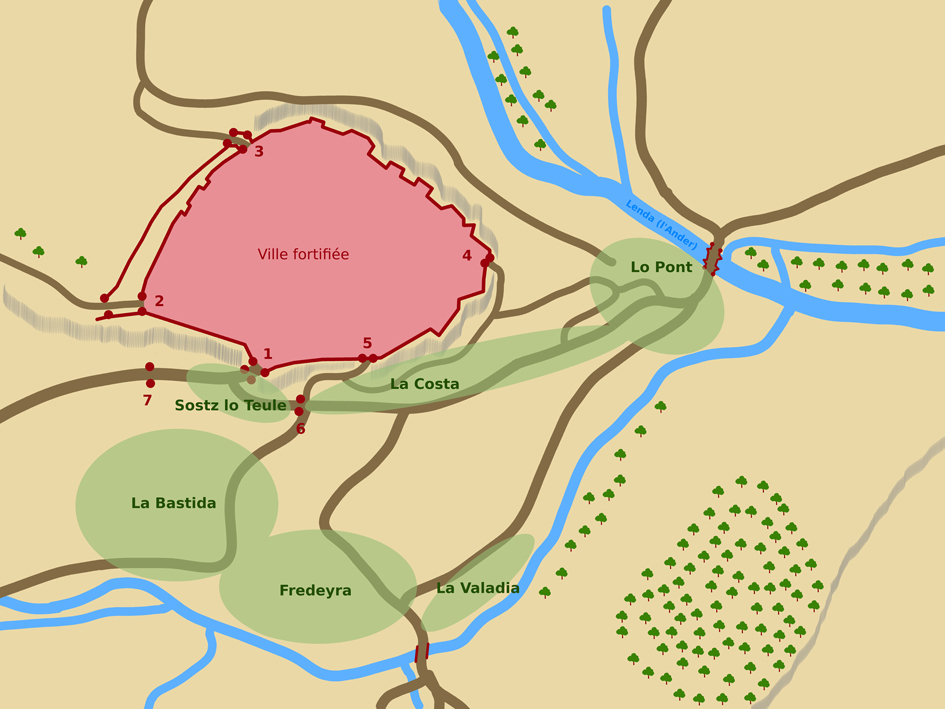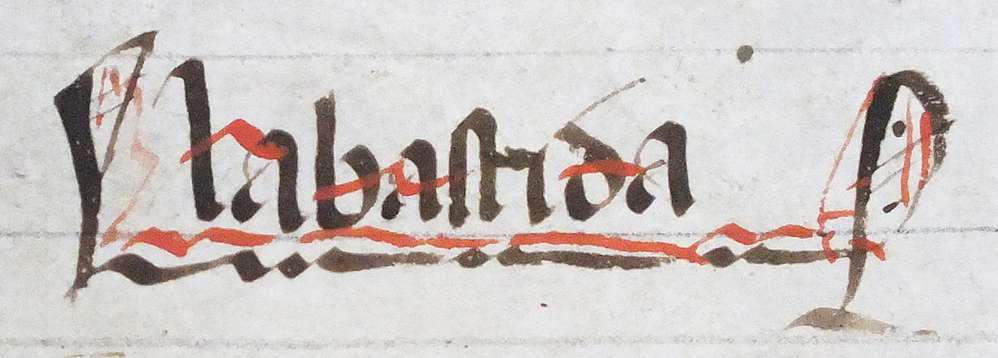II.
In the Middle ages
Around the year one thousand
After a 30 years period of troubles, the donation of Indiciac lands to the Abbey of Sauxillanges, daughter of Cluny, is effective in 1019. Soon, around the new priory and the great road of France to Languedoc, a population aggregates : the Saint-Flour city is born. Quickly, access to running water and the financial windfall of the commercial road will push some of the inhabitants to live outside the walls. The suburbs, the barris in Romance language (Occitan), appear.
Très vite, l’accès à l’eau courante et la manne financière de la route commerciale vont pousser une partie des habitants à vivre hors des remparts. Les faubourgs, los barris en langue romane (occitan), apparaissent.
The suburbs in the XIVth century
Shortly before the middle of the 14th century, the city counts between 7 and 8000 inhabitants of which at least a third live in its suburbs:


Sotz lo teule
The Faubourg Sotz lo Teule (under the Thuile) stretches along the sloping paths under the main gate of the city: la Porte du Thuile. sotz lo teule (sous le Thuile) s’étend le long des chemins en pente sous la principale porte de la ville.

Lacosta
That of Lacosta (the Hill) composes the lower part of the current « rue du Thuile », circulating artery between "upper" and "lower" town. Lacosta (la Côte) compose la partie basse de l’actuelle rue du Thuile, artère circulante entre « haut » et « bas ».

Lo pont
Lo pont Lo Pont (the Bridge), group of houses and shops on the west bank of the Ander. It very naturally took its name from the essential fortified work that spanned the river ... And still does nowadays!

Labastida
Labastida Labastida (The « small fortified place ») on the southern slope of the rocky peak. The name suggests that a fortified ensemble laid there but there is no trace of it. A few years later, the medieval registers separate the suburbs of Labastida, Freydeyra (district of Fridières today) and La Valadia. Labastida, Freydeyra (quartier de Fridières aujourd’hui) et la Valadia.
The bridge and its « recluserie »
Probably built in the twelfth century siècle (or early thirteenth), what is now called le Pont Vieux, the Old Bridge, has seen an intense traffic from the Middle Ages to the nineteenth century. He was then fortified. On one of its piles was a « recluserie », a small building that housed the recluse. That special kind of ermites were locked up, voluntarily, and spent the rest of their lives praying for the salvation of the city and its inhabitants.
Ces derniers étaient enfermés, volontairement, et passaient le reste de leur vie à prier pour le salut de la ville et de ses habitants.

Washerwomen and a young fisherman at Pont Vieux in the early 20th century, SFMA Coll.

